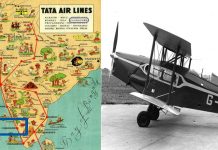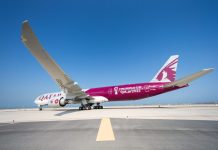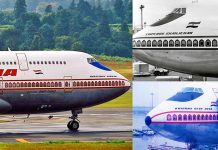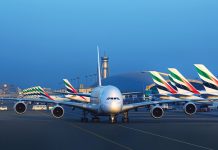These are the rules pilots have to obey in the cockpit
WHETHER it’s reading a book, binge-watching films or seeing just how many of those little bottles of wine you can put away, everyone has their own way of passing the time on a long flight.
But what about the pilots? This is what they get up to behind the cockpit door.
NOT flying the plane
You might like to think that pilots always have their steady hands at the wheel. But in reality, airmen and women normally flick on autopilot within seconds of taking off.
In normal circumstances, modern computer tech on passenger planes allows for next to no human intervention apart from during take off and landing.
While this fact might panic some, frequent flyers need not get too jittery because pilots are constantly monitoring for turbulence and other safety and comfort factors during cruising.
Other duties include monitoring the weather radar to gauge conditions up ahead, filling in paperwork, communicating via the radio with air traffic controllers and altering altitudes and flight paths as instructed.
So while they might not be directly hands on, their eagle eyes are keeping track of the flight’s progress.
That is, unless they’re catching up on the day’s news or getting some shut-eye.
Reading newspapers but NOT books
Depending on the airline, most pilots are allowed to flick through a newspaper during their journey.
Because papers are usually filled with many short articles, it means that a pilot’s attention is not taken for a dangerous length of time. But the same can’t be said for novels and other lengthy books, which are banned from the cockpit.
It is believed a crew member could too easily get swept up in a story and fail to monitor the flight deck regularly enough.
Although, many pilots are often just reading up on materials related to the flight and their job too. This can involve studying things such as procedures and the aircraft manual.
Some airlines, such as US carrier Delta, reportedly have policies against doing anything that’s not to do with the aircraft.
Online forums are overflowing with anecdotes from pilots claiming they have newspapers, listened to music and even played iPad games during flights.
But there are laws against flight crews doing anything during a critical phase of flight except what is required to operate the plane safely.
“Critical phases” include ground operations such as taxiing, takeoff, landing, and anything under 10,000 feet.
‘Controlled rests’
Perhaps the most shocking liberty available to pilots is the ability to take naps in midair.
Even on short haul flights, pilots can step out from the cockpit to take a snooze.
But nervous flyers needn’t panic as a pilot’s kip is a highly regulated aspect of the job that is actually designed to make flights safer.
Pilots have to have rest after a certain number of hours. In the US, pilots are limited to working eight hours in a row before they legally have to take a rest.
On long-haul flights, there are extra specialist flight crew members on board to take over monitoring the flight deck when it’s time for a break.
Pilots have to verbally communicate that they’re about to take a nap and confirm the other pilot is awake.
There are also limits on how long they can sleep, as if they fall asleep too deeply this can affect reaction times and alertness when they wake up.
In-seat rest is also meant to be a last resort, instead of a replacement for proper sleep.
Eating, but never the same meal
Most of us complain about plane food, so spare a thought for the airline crews who have to eat it all the time.
However, CNN reports that pilots do at least get to tuck into first and business class meals.
However, the pilot and co-pilot never get the same food as each other, in case one of the meals is contaminated.
This is to reduce the risk of both pilots getting dangerously ill enough to not be able to command the flight.



















